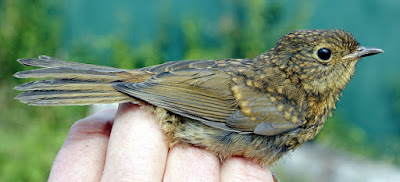I didn’t get many photos this morning. As each week passes the adult birds and those born last year get older and wiser about birders and keep out of the way of cameras and bins.
An early morning Barn Owl is pretty much guaranteed at the moment when food is scarce and the owls spend longer on the hunt. So it was this morning as the owl stayed alongside the moss road but hidden by distance and the straggly hedge at eye level. I made do with a Kestrel and then a Buzzard just sat in the opposite field but keeping a wary eye on passing cars. It looked like last year’s bird.
Buzzard
Along Lancaster Road a farmer was out early taking the tops off and shaping the hedgerow. It rather stopped my looking for finches and much else but the flood at Rawcliffe/Pilling held 4 Fieldfare, 1 Kestrel, 180 Lapwing, 10 Pied Wagtail and 8 Meadow Pipit.
At Gulf Lane the Linnet flock is down to about 40 birds, the lowest count of the winter but not surprising given the battering of rain, wind, snow and ice that both birds and vegetation have taken since August.
Around the moss road produced a couple of calling Buzzards on territory as 5/6 Meadow Pipits scattered ahead of the car.
Buzzard
I called at Conder Green out of habit more than optimism and the chance the Avocets may appear any day. They are already in Lancashire after their winter away. No up-turned bills just the usual 3 pairs of Oystercatcher, 15 Curlew, 12 Redshank and a gang of 10 noisy Shelduck. Spring is definitely in the air with Robins and Skylarks in song although next week we’re back to cold and frosty air.
Robin
A trip around Jeremy Lane and up to Cockersands produced a healthy if unspectacular mix of species. Best was a mixed flock of Starlings, Fieldfares and Redwings numbering 200/200/6. Redwings are much scarcer than Fieldfares in early spring as if the Fieldfares make a leisurely journey north while the Redwings dash through mostly unseen.
Near Cockersands was the usual Kestrel, a female Stonechat and some pretty huge flocks of Lapwings and Golden Plovers which numbered in the few thousands of each. Also, 30+ Skylarks, 30+ Redshank, 18 Twite, 13 Pied Wagtail, 8 Meadow Pipit and 6 Tree Sparrow.
Kestrel
Golden Plovers
I saw a three or four Brown Hares this morning. One stopped in a gateway to clean its feet after it ran through a muddy patch of ground. I’ve seen them do that before.
Brown Hare
There’s ringing tomorrow, something of a novelty this winter. But the forecast is half-decent with just a 10mph wind at a partly sheltered site. I’m meeting Andy at 0700. Log in later to see how we did.













































































